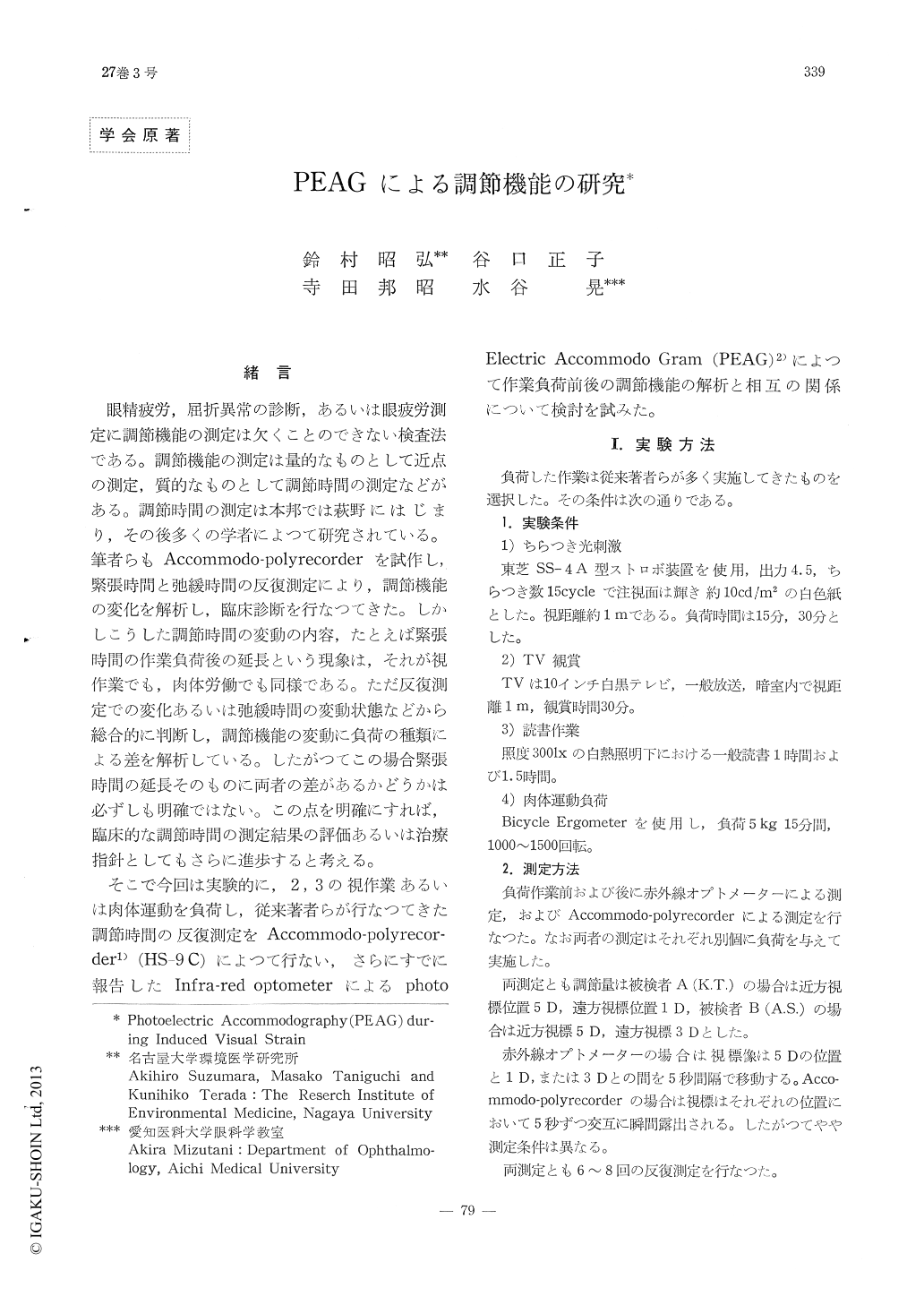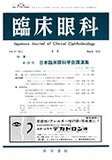Japanese
English
- 有料閲覧
- Abstract 文献概要
- 1ページ目 Look Inside
緒言
眼精疲労,屈折異常の診断,あるいは眼疲労測定に調節機能の測定は欠くことのできない検査法である。調節機能の測定は量的なものとして近点の測定,質的なものとして調節時間の測定などがある。調節時間の測定は本邦では萩野にはじまり,その後多くの学者によつて研究されている。筆者らもAccommodo-polyrecorderを試作し,緊張時間と弛緩時間の反復測定により,調節機能の変化を解析し,臨床診断を行なつてきた。しかしこうした調節時間の変動の内容,たとえば緊張時間の作業負荷後の延長という現象は,それが視作業でも,肉体労働でも同様である。ただ反復測定での変化あるいは弛緩時間の変動状態などから総合的に判断し,調節機能の変動に負荷の種類による差を解析している。したがつてこの場合緊張時間の延長そのものに両者の差があるかどうかは必ずしも明確ではない。この点を明確にすれば,臨床的な調節時間の測定結果の評価あるいは治療指針としてもさらに進歩すると考える。
そこで今回は実験的に,2,3の視作業あるいは肉体運動を負荷し,従来著者らが行なつてきた調節時間の反復測定をAccommodo-polyrecor—der1)(HS−9C)によつて行ない,さらにすでに報告したInfra-red optometerによるphotoElectric Accommodo Gram (PEAG)2)によつて作業負荷前後の調節機能の解析と相互の関係について検討を試みた。
The state of accommodation during fatigue induced by ocular or physical strain has been evaluated with use of photolectric accommodo-gram (PEAG). The TEAG incor porates an infrared optometer and the time of accommoda-tion is recorded by means of polyrecorder. The studies have been made on two intelligent, co-operative test subjects.
A prolonged relaxation time over contraction time was noted during ocular strain induced by flickering stimulation, watching television or reading. Both values were prolonged following physical strain.

Copyright © 1973, Igaku-Shoin Ltd. All rights reserved.


